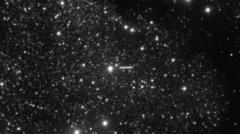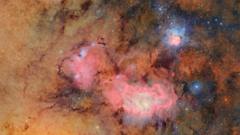Oldest Known Comet? Astronomers Discover Exciting Interstellar Object
A newly discovered interstellar object, named 3I/Atlas, suggests it could be the oldest comet known to science, sparking interest among astronomers globally.
Astronomers from the University of Oxford have revealed astonishing findings regarding an interstellar object named 3I/Atlas, potentially dating back over seven billion years, making it possibly the oldest comet observed. This object was first detected on July 1, 2025, approximately 670 million kilometers from the Sun. During a meeting at the UK's Royal Astronomical Society, researchers, including astronomer Matthew Hopkins, expressed excitement over the implications of 3I/Atlas. They believe that it originated from the Milky Way's 'thick disk', a region of ancient stars, indicating it is likely composed of substantial water ice. As it approaches the Sun, the heat may produce a glowing tail of vapor and dust—an observable spectacle later this year. Prof. Chris Lintott, involved in the study, stated this exciting discovery opens a window into the galaxy's ancient past. Astronomers expect that as technology advances with new telescopes, such as the Vera C Rubin, the exploration of interstellar objects will expand significantly.
A newly discovered interstellar object, named 3I/Atlas, suggests it could be the oldest comet known to science, sparking interest among astronomers globally.
Astronomers from the University of Oxford have revealed astonishing findings regarding an interstellar object named 3I/Atlas, potentially dating back over seven billion years, making it possibly the oldest comet observed. This object was first detected on July 1, 2025, approximately 670 million kilometers from the Sun. During a meeting at the UK's Royal Astronomical Society, researchers, including astronomer Matthew Hopkins, expressed excitement over the implications of 3I/Atlas. They believe that it originated from the Milky Way's 'thick disk', a region of ancient stars, indicating it is likely composed of substantial water ice. As it approaches the Sun, the heat may produce a glowing tail of vapor and dust—an observable spectacle later this year. Prof. Chris Lintott, involved in the study, stated this exciting discovery opens a window into the galaxy's ancient past. Astronomers expect that as technology advances with new telescopes, such as the Vera C Rubin, the exploration of interstellar objects will expand significantly.


















